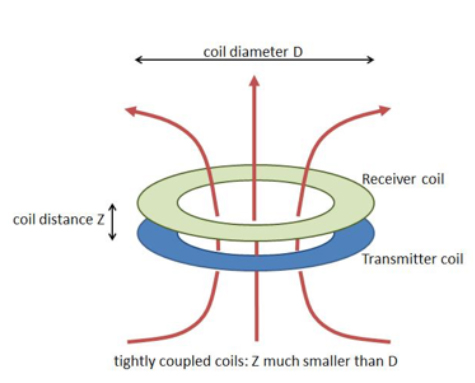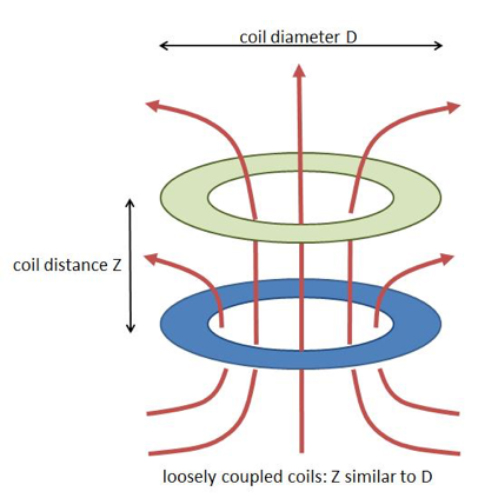All Qi receivers (phones, sleeves, backdoors, and charging cards) that have shipped in the last 3 years and continue to ship, can be charged in inductive mode as well as resonant mode. It is the transmitter (wireless charger) that defines the operation mode.
所有的QI接收器(手机,手机壳,背壳,充电卡)都可以兼容磁感应以及磁共振充电模式,充电模式是由所用充电器决定的。具体的充电模式是由发射端决定的。
This video shows a wireless charger that can power all standard Qi phones and tablets at any distance between 0 and 30 mm.
这个视频显示,符合QI标准的无线充电器在给手机和平板充电时最远可以达到3厘米。
In the video you see the wireless charger operating in resonant mode as well as in inductive mode.
在视频里,你可以看到在磁感应模式和磁共振模式下工作的无线充电器。
Wireless charging in inductive mode
磁感应无线充电模式
Most Qi transmitters use tight coupling between coils. In that configuration, the best results are achieved by operating the transmitter at a frequency that is slightly different from the resonant frequency of the Qi receiver. Off-resonant operation gets you the highest amount of power at the best efficiency. This operating mode is called "inductive".
大部分QI充电器使用的是紧耦合技术。在这样的设置中,为了达到最好的结果,需要发射线圈的工作频率同接收线圈的共振频率稍有不同,因为不能做到发射端的频率完全同接收端的共振频率一致。使用非磁共振模式可以帮助你达到最好的充电效率,这样的模式就叫磁感应。
The transmit and receive coils are tightly coupled when the coils have the same size, and the distance between the coils is much less than the diameter of the coils.
为了达到发射线圈和接收线圈紧耦合的状态,需要发射端和接收端的线圈大小一致,发射线圈和接收线圈间的距离必须远远小于线圈的直径。


磁共振无线充电模式
When the distance between receiver and transmitter increases, the magnetic coupling between the coils decreases. Systems with a low coupling factor have to operate at the resonant frequency of the receiver. This mode is called "resonant".
当发射线圈和接收线圈的距离增加,线圈之间的耦合性就会降低。当系统处在一个低耦合状态下时,就必须要接收端处在共振的频率下。这种模式叫做“磁共振”模式


磁共振以及磁感应的利与弊
Loosely coupled systems trade-off larger distance at the cost of lower power transfer efficiency and higher electromagnetic emissions. This may be suitable choice in applications where tightly aligned coils is impractical, but less suitable for applications with tight EMI or EMF or efficiency requirements.
松耦合系统可以调节长距离,低效率传输和高电磁泄漏三者之间的关系。这使松耦合系统可适用在“紧耦合的线圈阵列”不可行的应用场景,但是对于EMI和EMF要求过高或者对效率要求过高的应用场景,松耦合系统则很不适用。
Tightly coupled systems, because of their higher efficiency, tend to produce less heat which is an advantage is products with tight thermal budgets such as modern smartphones.
紧耦合系统,由于能量传递更有效,因此产生热量较少,适合对发热控制要求较高的设备,例如我们常用的手机等。